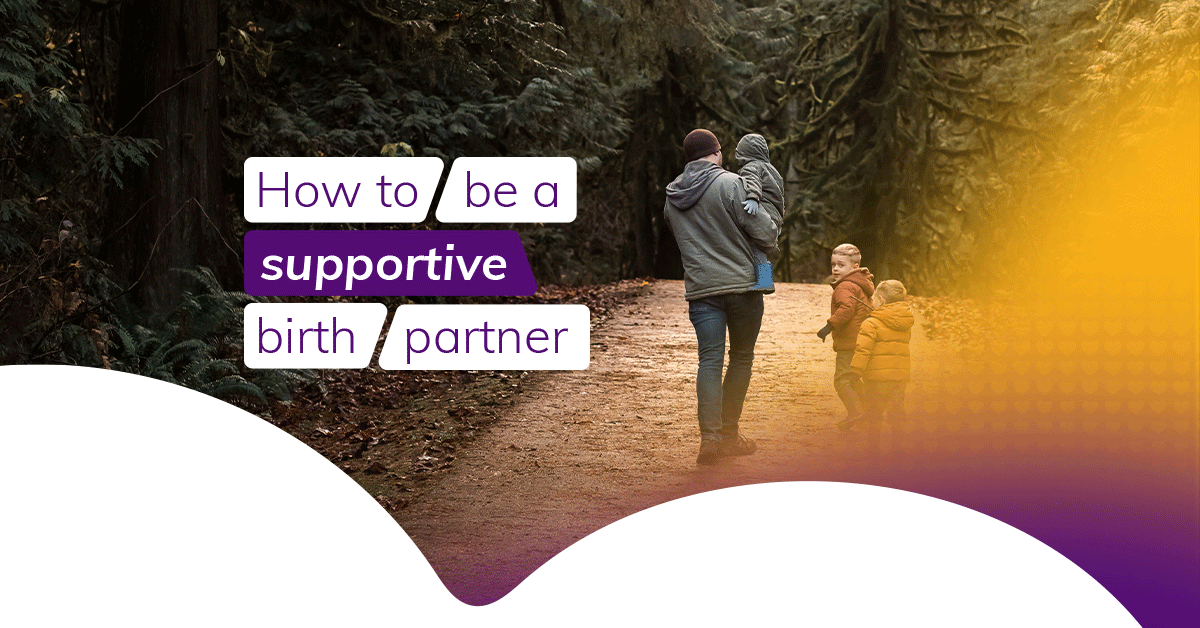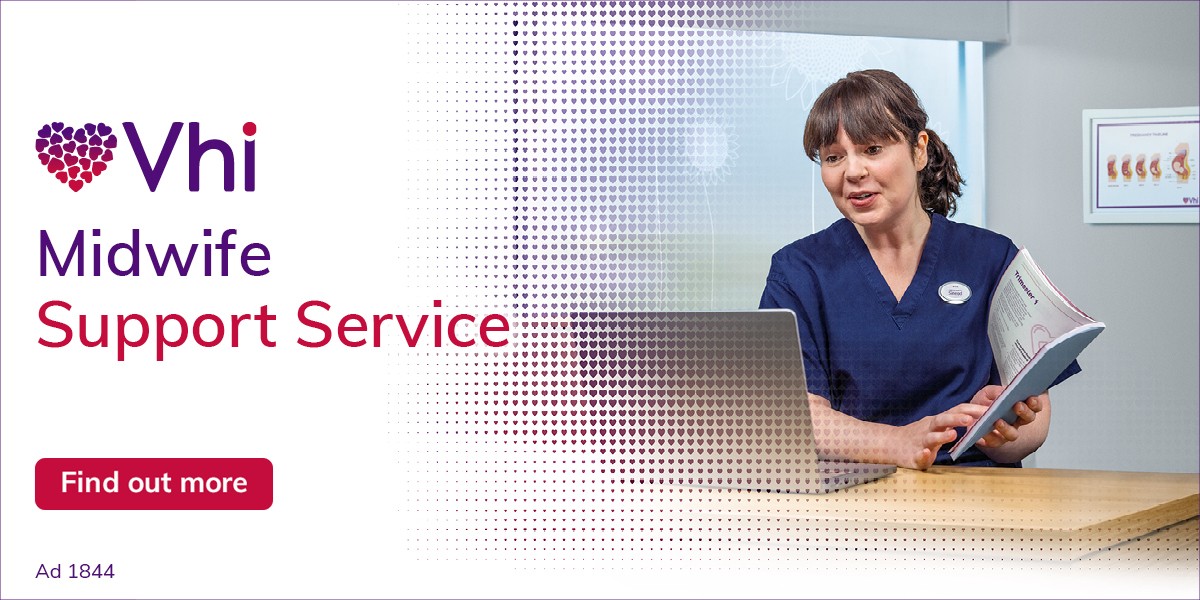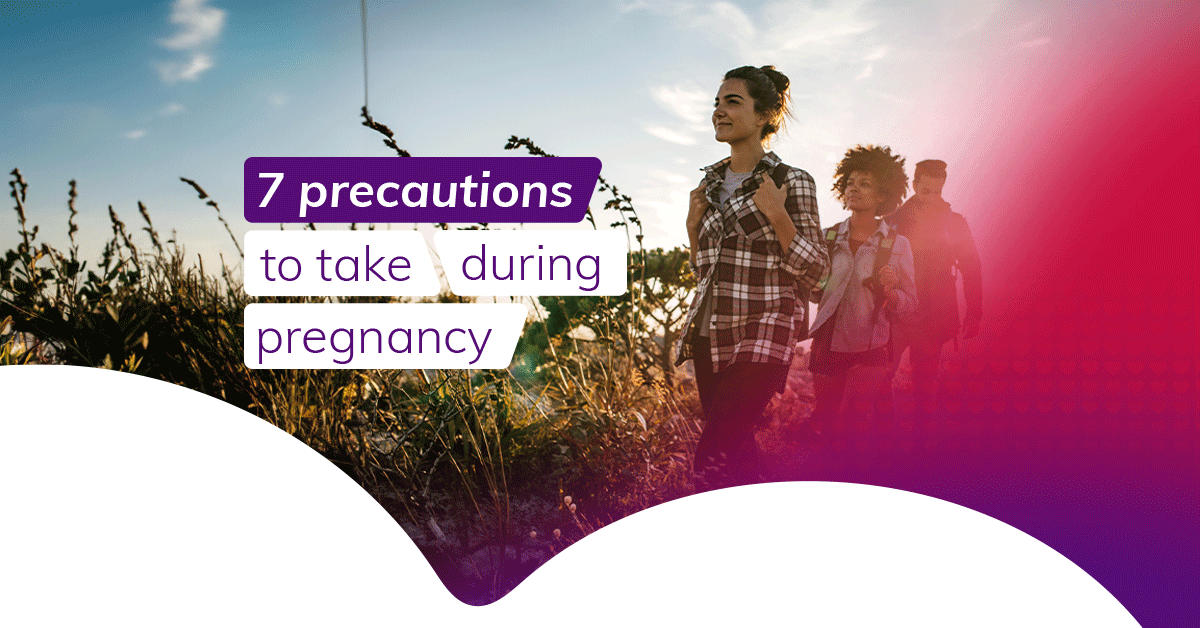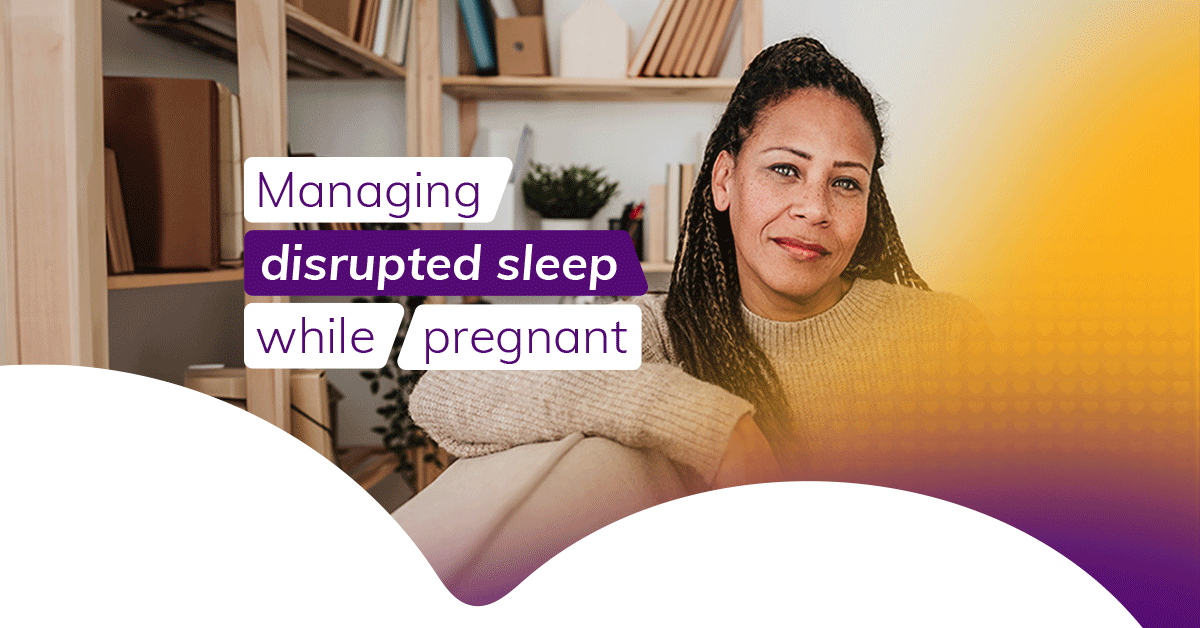

‘Expect the unexpected’: how to be a supportive birth partner
The best birth partners are a calm, constant and reassuring support throughout the pregnancy journey. If you’re taking on that role, Vhi Midwife Support Service Manager Breda Crotty is here to get you as prepared as possible.
I have memories of being in the labour ward after a long night, when the doorbell would sound and you’d find an anxious-looking partner waiting to be let in. I loved that – it’s such a big deal for them and it can be an important support for some mothers.
A birth partner is a valued and trusted person, close to the pregnant woman, who can offer support both physically and emotionally. That can mean a partner in life, a family member, or trusted friend.
While it may not be for everyone, the World Health Organisation recommends for women in labour to have a birth partner. The research shows that benefits can include more relief from pain, a more satisfying birth experience, and improved chances of a normal birth overall. So, how can you get ready to take on this important job?
Getting prepped for the big day
Being informed is so important, so it’s really useful to attend antenatal classes if possible and read up as much as you can from trusted sources. That said, you won’t be expected to know everything.
There are other practical things to consider. Making sure your employer is aware of your situation means that you can plan the appropriate time off work and that there won’t be any surprises for them if something happens in the middle of the night.
As the time draws closer, familiarise yourself with the route to the hospital. Know everything from the car park situation to any guidance from your unit on arriving out-of-hours. If you don’t have a car, will you need to take a taxi late at night or can a relative take you? All these practical things need to be considered. Have your phone and any important information you need to bring with you close to hand, as well as your partner’s fully-stocked bag. And don’t forget a change of clothes!
You should also discuss what form of pain relief the woman wants to have ahead of time. There are also other options, such as water births, that are available in a lot of units around the country. A well-prepared birth partner will be part of those conversations, understand what they’re going into, how plans can change, and where they fit into the wider picture.
Knowing when it’s time to go
Be mindful of Braxton Hicks contractions, which is the uterus preparing for labour ahead of time. Most women will start experiencing this from about 28 weeks on and be familiar with how they feel. Their tummy will get tight and hard for a minute and then relax. If you’re in labour, contractions will be more painful and frequent.
Timing your partner’s contractions is the gold standard for gauging whether you are in true labour. When your partner starts contracting – meaning the muscles of the uterus tighten and relax – they might be very infrequent. As they get stronger and closer together, you can start timing them using a watch or your phone. It’s helpful to time three in a row. When you reach a point where the contractions are in a regular pattern of lasting at least 60 seconds and coming every 5 minutes, it’s time to go, keeping in mind the distance to the hospital!
If you’re unsure of what to do, ring your maternity unit and they’ll be able to advise you. They’ll probably do a triage assessment over the phone, asking about the baby’s movements, how the woman has been feeling over the last couple of days and so on.
If the woman’s waters break you’ll need go to the hospital straight away because there is a risk of infection. It will feel like a popping sensation for her, followed by trickle or gush of fluid that she can’t stop. A plug of mucus – of thicker consistency – can also signal that labour is near.
What to expect during the delivery
The best advice I can give is to expect the unexpected! You just never know what’s going to happen with labour. Every experience is unique and unpredictable, so prepare to be flexible. And that includes potentially being at the hospital or clinic for 20 hours or more.
Things will happen in stages – you can be there for the stages of dilation, from the first stage of regular contractions that lasts for many hours, to the second stage of full dilation when the woman is actively pushing the baby out (from mere minutes to three hours), to the third stage when the placenta is delivered in around half an hour.
Be mindful of what’s working best for your partner. Pay attention to how she’s being assessed and cared for by the different personnel, from registrars and paediatricians to the healthcare assistants coming in to change her pillows. Generally, the caregiving midwife will give you all that information. Things will run smoother if you work with the team that is looking after your partner, so try to follow their instructions as best you can.
You might also be an outlet for the anger or frustration of the woman, which can be a bit upsetting. Just know that they’re venting their frustration on a person they love dearly and whom know loves them back, so they feel safe doing it.
Emotional support is key. Sometimes that means it doesn’t have to be a partner – it might be another family member or friend who is particularly suited to that kind of role.
Acting as an advocate
Communication with the team is vital. You’re best placed to act as an advocate on your partner’s behalf and ask questions when you feel it’s appropriate. Generally speaking, the team will be very clear about what’s happening and will always be looking for your informed consent. Possible outcomes will be explained to you both and then you can work towards making your partner comfortable about what is happening.
For example, if a woman had a previous Caesarean section but is keen for a vaginal delivery this time, they should know that there is the potential for another Caesarean being required.
That risk will be explained to you and, if things change rapidly, you’ll want to understand why the team has had to intervene. How women cope is very variable, so be mindful of what a profound and overwhelming experience it can be. Help your partner understand the thought process. If it’s not clear why they are choosing to do something, don’t be afraid to ask: this should help put your partner at ease.
Taking care of yourself
Your own health – staying hydrated and fed – is really important during the experience. You’ll be hugely focused on the woman having the baby, which is great, but you don’t want to end up fainting! You’ll be advised to go out for a breath of air occasionally; assessments will be made so that you shouldn’t miss much. Some birth partners find it difficult seeing their loved one going through pain, but you’ll have to trust the people around her to do the right thing. It’s really important that you’re in the right headspace coming into delivery, so there is an aspect of mental preparation on your journey. Self-care is key in that regard.
Being around after the birth
The few minutes after the delivery of the baby are a magical time. However, sometimes people are unprepared for what newborns actually look like! They can be red and wrinkly, often with a white coating called vernix on them. It can be overwhelming to suddenly see this new life after nine months of ups and downs. In those few minutes, the midwife or doctor will make sure the baby is healthy and dry them off. There are decisions around the cutting of the baby’s cord. It’s also recommended that skin-to-skin contact with the mother happens very rapidly, to make the baby feel safe and warm and promote bonding. There’s a fine balance between making sure that mother and baby are happy and that everything is done clinically as it should be.
You’ll have a role to play in the next step: breaking the news! You should have a list of names to contact and, once your partner is happy, you can step outside the labour ward and start making those calls. You may choose to call just one person who can pass on the good news, letting you make further calls once things settle down.
I personally don’t think women should have a huge number of visitors in the days after delivery, as they need a chance to gather themselves and recuperate physically and mentally. So you can help protect them in that regard, putting the family unit first. It’s okay to be a bit selfish. People naturally want to share the love, but they’ll understand.
The role of a lifetime
Your role doesn’t end there, however. A good birth partner will still be around to share the experience. And remind the mother of things they might have missed – everybody likes to recount their birth experience and it can be good to have someone to corroborate that story. It will stay with you both for the rest of your days. As the person who went through that incredible journey with them, you’ll always have that major connection to this new Mum. It truly is a profound honour to be part of something like that.
Remember, the Vhi Midwife Support Service is on hand for members that have any questions while supporting their partner through the pregnancy journey.
This content is for information purposes only and is not intended or implied to be a substitute for professional medical advice, diagnosis or treatment. Always seek advice from your GP or an appropriate medical professional if you have concerns about your health, or before commencing a new healthcare regime. If you believe that you are experiencing a medical emergency call 999 / 112 or seek emergency assistance immediately.
Meet our Vhi Verified Expert

Breda Crotty
Vhi Midwife Support Service Manager



